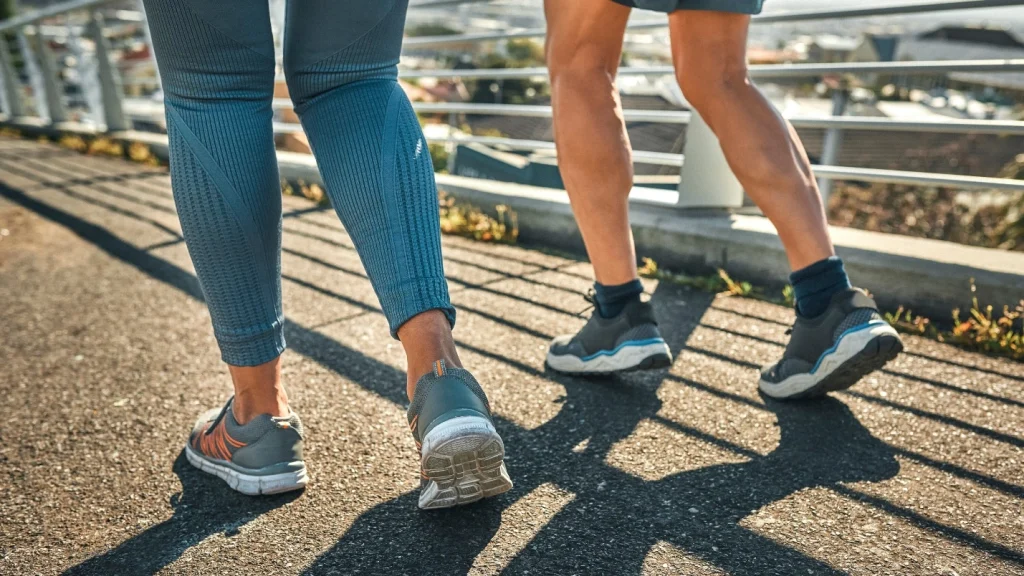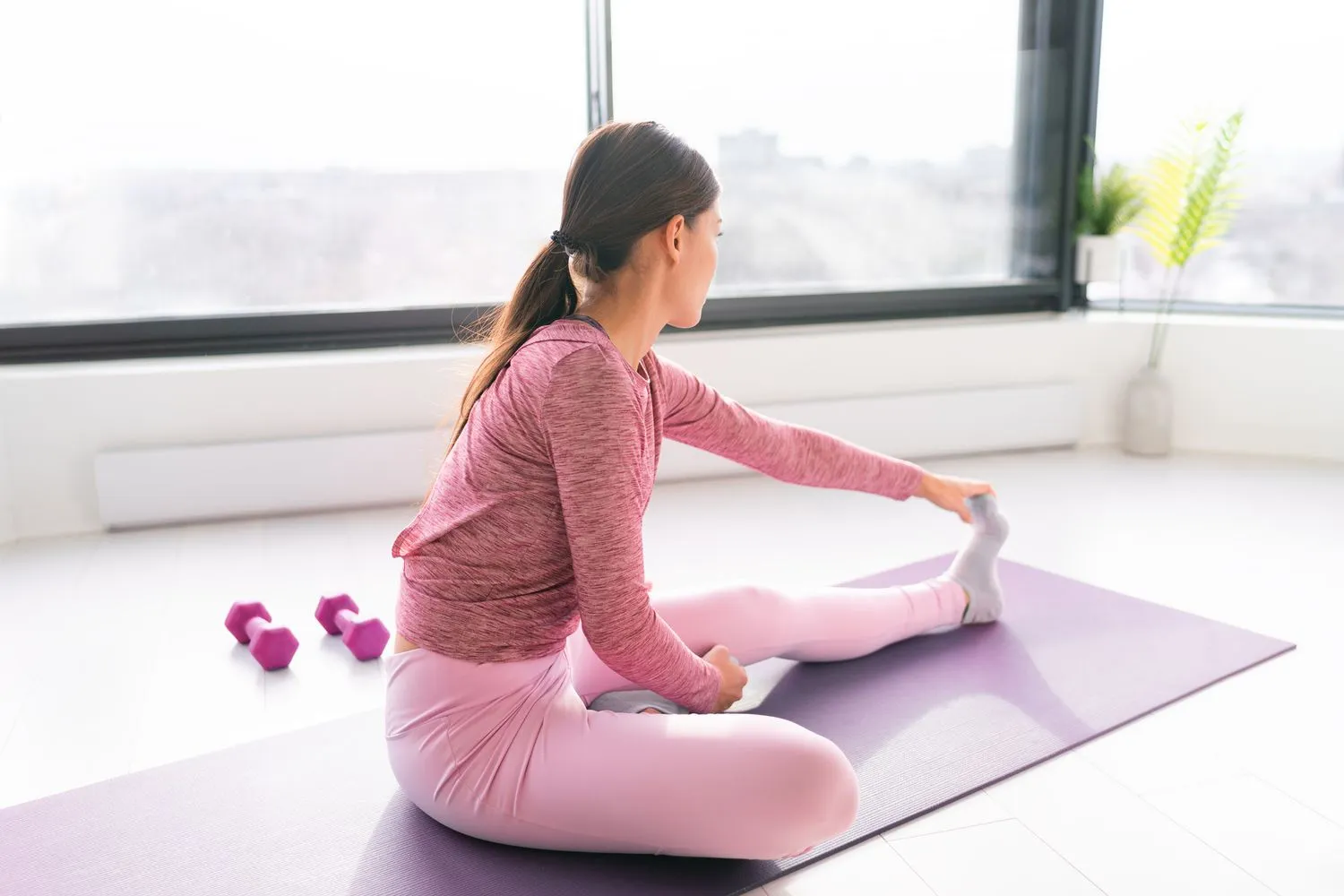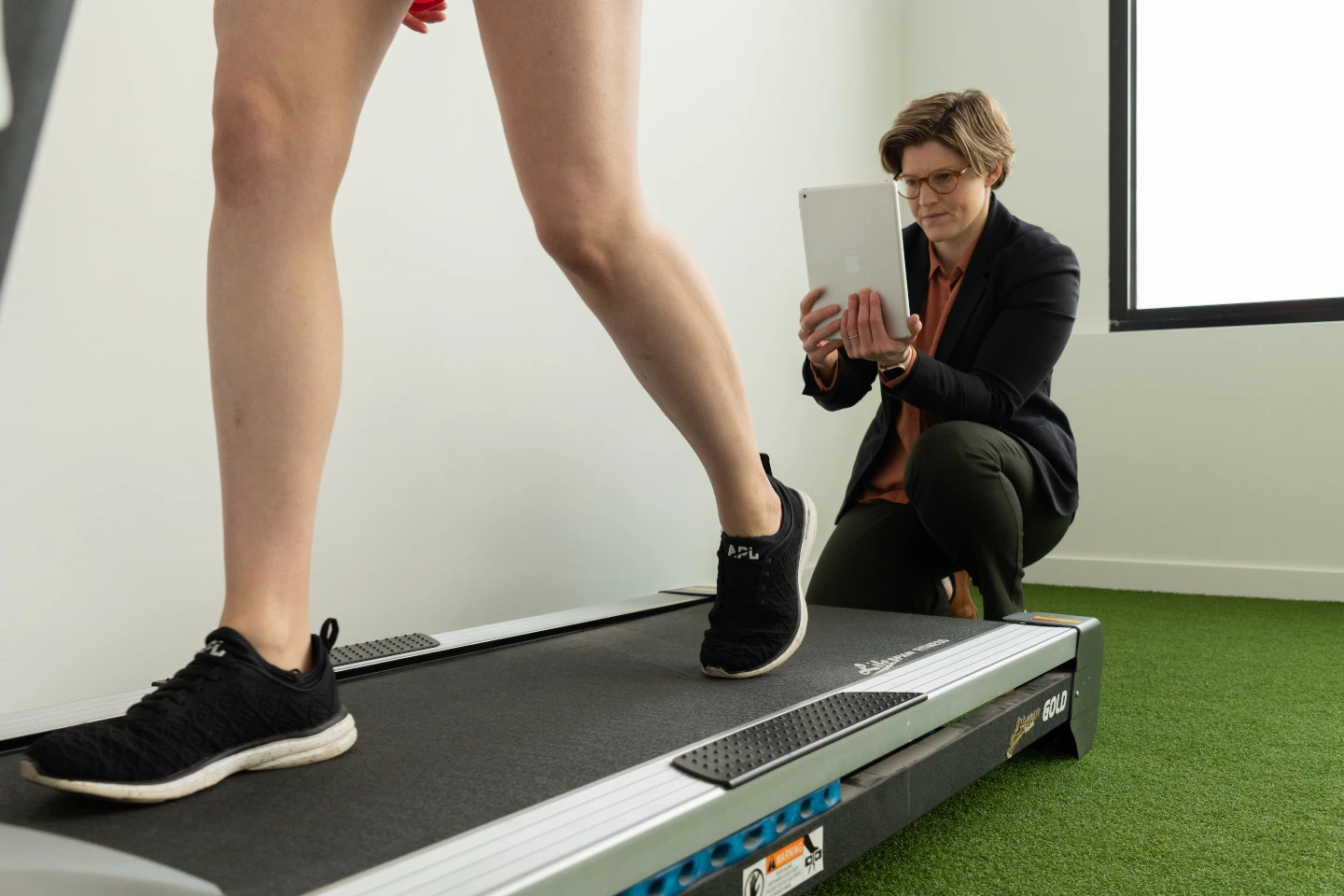
Exercises to Treat Clubfoot for Adults: 10 Corrective Moves
You may not believe it, but exercises to treat clubfoot can easily treat this problem. Clubfoot is an abnormal shape and many people have problems with the curved appearance of their feet, but don’t worry at all; because there are many ways to fix this problem.
If you are also a little skeptical about the condition of your feet and feel that they have an unnatural and bracket-shaped shape, be sure to join us. In this article from Human Health Mag, we want to tell you how to diagnose clubfoot in the elderly, young people and teenagers, then also introduce the best corrective exercises for clubfoot.
What Is Clubfoot?
Before talking about exercises to treat clubfoot, it is important to know that this condition is a skeletal abnormality and is referred to as a condition in which the knees are tilted outward and the person’s legs appear bent and arched; so that when the ankles are close together, the person’s knees do not meet. Corrective exercises for clubfoot, especially if done at the right age, can help improve this condition.
Exercises and corrective exercises such as pilates for the elderly help strengthen the muscles around the knees and improve the alignment of the legs, which also helps reduce pressure on the knees. Exercises such as squats, inner thigh muscle stretches, and balance exercises can correct the condition of the knees over time. The sooner you start these exercises, the greater their effect will be. These exercises not only reduce knee pain, but may also prevent problems like arthritis and long-term pain in the future. Of course, it is important to do these exercises regularly and with the guidance of a physical therapist to avoid further damage to the knees.
Causes of Clubfoot in the Elderly
There are various factors and reasons involved in the occurrence of bow legs, and of course, exercises to treat clubfoot play an important role in its treatment. Here, before discussing the solutions for clubfoot treatment, we will mention some of the most important causes of curved foot.
Bone diseases
Some bone diseases cause clubfoot deformity, and their treatment will correct the shape of the knees and feet. Diseases such as:
- Blunt
- Rheumatism
- Osteomalacia
- Osteoporosis
- Rheumatoid arthritis
- Incoordination in the growth plate
- Flatness of the sole of the foot more than 90 degrees
- A blow to the growth plate
- Any untreated injury, such as a torn knee capsule, torn ligament, or a nonunion of a femur fracture
Genetics
Sometimes the cause of clubfoot deformity is hereditary and has nothing to do with external factors, but don’t worry; Whatever the cause, medical and sports science does not give up so easily. This condition can be corrected with corrective movements for the bowed leg or other treatment methods. For example, by doing exercises for leg weakness, this abnormality can be corrected to some extent.
Wrong behavioral habits
Yes; some of our behaviors and habits can have such an effect on the shape of our body and even the shape of our legs; these habits include:
Wrong walking pattern
Yes; some of our behaviors and habits can have such an effect on the shape of our body and even the shape of our legs; these habits include:
- Wrong walking pattern
- Sitting and standing badly
- Using bulky diapers for the baby
- Overweight and obesity and high fat percentage
- Muscle weakness
- Weakness of the biceps femoris muscles
- Shortness of the semimembranosus and semitendinosus muscles
- Shortness or weakness of the hamstring muscle
Effect of Exercises to Treat Clubfoot in the Elderly
In the elderly, clubfoot is most often caused by arthritis or wear and tear of the knee joints, and although performing exercises to treat clubfoot can have some benefits, it cannot completely correct clubfoot, because the bones and joints do not change much at this age. Performing sports exercises is more effective in young people and adolescents.
Corrective exercises can help strengthen the muscles around the knees in the elderly to some extent so that the knees become stronger and less prone to sagging, and this is especially useful in reducing the risk of falling and reducing pressure on the joints and tolerating knee pain. In general, performing corrective exercises in the elderly helps more with symptom management and improving quality of life.

10 Exercises to Treat Clubfoot
Now it’s time to teach some exercises to treat clubfoot. Doing these exercises will help a lot in treating your foot shape. Also, keep in mind that the best solution to treat this problem is to have a specific correction program. A program that is designed and adjusted according to your physical condition. Some of the appropriate exercises to treat clubfoot are as follows:
1- Leg Raising Movement
- Lie on the floor on your side, the whole body should be in one line;
- Raise your left leg as high as you can;
- Keep your upper body fixed and do not move;
- Stay in this position for 5 seconds and then lower your leg;
- Do this movement for each leg in 2 sets of 10.
2- Hip Bridge Movement
- Lie on your back on the floor;
- Bend your knees to 90 degrees;
- Slowly raise your hips and get into a hip bridge position;
- Hold for about 2 seconds while contracting your glutes;
- Once this becomes easy for you, you can do the hip bridge on one leg;
- Practice this corrective movement for treating clubfoot in 2 sets of 10.
3- Drawing a Circle With a Ball
- Place a small soft ball (pillow or small box) between your knees;
- Try to draw an imaginary circle with the ball between your knees;
- Draw a circle on both sides (left and right);
- When doing this exercise, only your knees should move, your hips and back should remain stationary;
- Do this movement from the series of corrective movements for clubfoot for each leg in 2 sets of 10.
4- Full Bodyweight Squat
- Are you ready for the fourth exercise in the leg curl series?
- First, stand straight and spread your feet shoulder-width apart;
- Squat down to the half-squat position and hold for 5 seconds (approximately) on each squat;
- Then lower yourself completely and squat down;
- Slowly stand up and return to the starting position;
- Do this in 3 sets of 5 reps.
Note: To do this leg curl, your knees should not bend inward. Your body weight should also be on your hips and thigh muscles, not your knees.
5- Full Squat with Table Support
- Stand in front of a table (or chair or something similar);
- Do a full squat with table support;
- Go down until you feel no pain;
- Do this in 3 to 4 sets of 20 reps.
- Note: Do not bend your knees inward.
6- Bear Squat
- Bend over the floor so that your hands are in front of your feet and your heels are on the floor;
- Bend your knees inward until you feel a stretch and contraction in the back of your legs;
- Do not move your hands at all and only bend your knees inward;
- Do this until you are doing a full squat;
- Practice this exercise, one of the best leg curl correction exercises, in 2 sets of 12.
7. Half Squat with Table Support
- Ready for the seventh exercise in the series of clubfoot correction exercises?
- First, stand in front of a table (or chair or something similar);
- Do a half squat with table support;
- Do this exercise in 3 to 4 sets of 20.
8. Hip Rotation
- Sit on the floor and place your hands behind your head;
- Your knees should be bent 90 degrees in front of you;
- Rotate each leg fully in and out;
- Let the contraction and stretch on the inner thigh muscles be fully felt;
- Repeat this corrective exercise for clubfoot treatment in 3 sets of 10.
9- Half-Sitting Hip Rotation
- Sit in a half-sitting position, so that your buttocks are not on the floor;
- Bend each leg inward as in the previous exercise;
- If you find it difficult, use your hands to help you on the floor;
- Do this exercise from the leg brace correction series in 3 sets of 10.
10- Toe Stretch
- Sit on your toes with both knees;
- Bend forward until you feel the stretch in your soles;
- Then return to the starting position;
- Do this exercise in 3 sets of 15.
Which Exercises to Treat Clubfoot Are Suitable?
Doing exercises to treat clubfoot and corrective movements for clubfoot in principle can be useful in treating this abnormality. The best exercises that help improve this abnormality include the following:
- Pilates: Pilates exercise is very similar to yoga and can improve the vital muscles of the body. This exercise also helps strengthen and tighten the muscles and shape the legs and treat clubfoot and is effective in eliminating and correcting body defects.
- Yoga: Yoga exercises for seniors are the easiest and best way to increase flexibility and correct body shape. If you have clubfoot, yoga can be a great challenging exercise for you. With the help of a yoga belt and performing its various movements, you can correct these problems.

- Massage: Massage therapy has many benefits for the elderly. Massage for Seniors is done over a long period of time; Because the therapist usually massages the person’s foot. Massage is useful in reducing the curvature of the elderly’s foot. Of course, a skilled therapist is needed to give the massage.
- Bodybuilding: Bodybuilding is suitable and necessary for any sport and for any person. Because it guarantees a fit and well-shaped body and is a good way to correct and treat many abnormalities such as bow legs and cross legs. It is only very important to follow a proper bodybuilding and diet program. So you can use this popular exercise and do bow leg correction exercises.
Complications of Untreated Clubfoot
If you do not perform exercises to treat clubfoot in a timely manner and do not take action to treat clubfoot, you may experience the following complications:
- Early osteoarthritis
- Spinal rotation
- Shortening of height
- Duck gait
- Sliding while walking and imbalance
- Change in the angle of the kneecap and their tendency to turn inwards
- Change in the shape of the legs and an unpleasant appearance
- Excessive pressure on the inner surface of the knee joint and severe pain
- Stretching of the soft tissues on the inner side of the knee and severe pain
Concluding Remarks
In this article, we talked about exercises to treat clubfoot. Clubfoot is a physical abnormality that has many ways to treat and improve this physical condition, including surgery and corrective exercises for clubfoot. In general, corrective exercises, along with non-invasive treatments such as using a knee brace (or brace) and medical shoes, can completely or largely treat clubfoot.
The most effective exercises and corrective exercises for clubfoot include movements such as squats, stretching exercises for the inner thigh muscles, and balance exercises that help strengthen the leg muscles and improve knee position. The time required to correct clubfoot through exercise depends on the severity of the knee sprain and the follow-up and continuity of exercise, but usually a person notices noticeable changes within a few months.
We’re curious to hear your thoughts! What’s your take on this topic? Comment below and join the conversation; your opinion could spark new ideas!

Frequently Asked Questions
How Long Does it Take to Correct a Clubfoot with Exercise?
To see improvement, corrective exercises must be performed regularly and daily for at least 3 to 6 months. Results may appear gradually, and the effectiveness of these exercises depends on the severity of the clubfoot and the level of commitment to the exercise program.
Can Corrective Exercises Treat Clubfoot in Adults?
Corrective exercises in adults can help improve the condition of the clubfoot and reduce symptoms, but they usually cannot completely correct the structural changes in the bone. These exercises focus more on strengthening the muscles and improving balance and alignment.
Is There a Cure for Clubfoot?
Treatment of children with clubfoot is possible with the help of orthopedic devices such as braces, knee braces, and orthotics. Treatment of adults with clubfoot is surgical in severe cases. Corrective exercises for clubfoot help prevent joint problems and knee osteoarthritis.
Does Clubfoot Correction Increase Height?
Clubfoot correction can lead to a small increase in height (up to one and a half centimeters) by improving alignment and making the legs straighter, but this increase depends on the severity of the foot deformity. This change is caused by correcting the position of the feet.
Are Corrective Exercises for Clubfoot in Children the Same as in Adults?
Corrective exercises for clubfoot in children are not very different from those for adults; in children, due to the greater flexibility of the bones and muscles, these exercises are more effective and the likelihood of complete correction is higher. In adults, corrective exercises are used more to reduce symptoms and strengthen muscles than to make structural corrections.
